When I got my first dog, I quickly realized all those clichés about dog ownership are totally true. They do eat everything. They do leave hair everywhere. They do make your heart grow three sizes overnight.
Once you get a dog, your life will never be the same.
So why would their impact on history be any different?
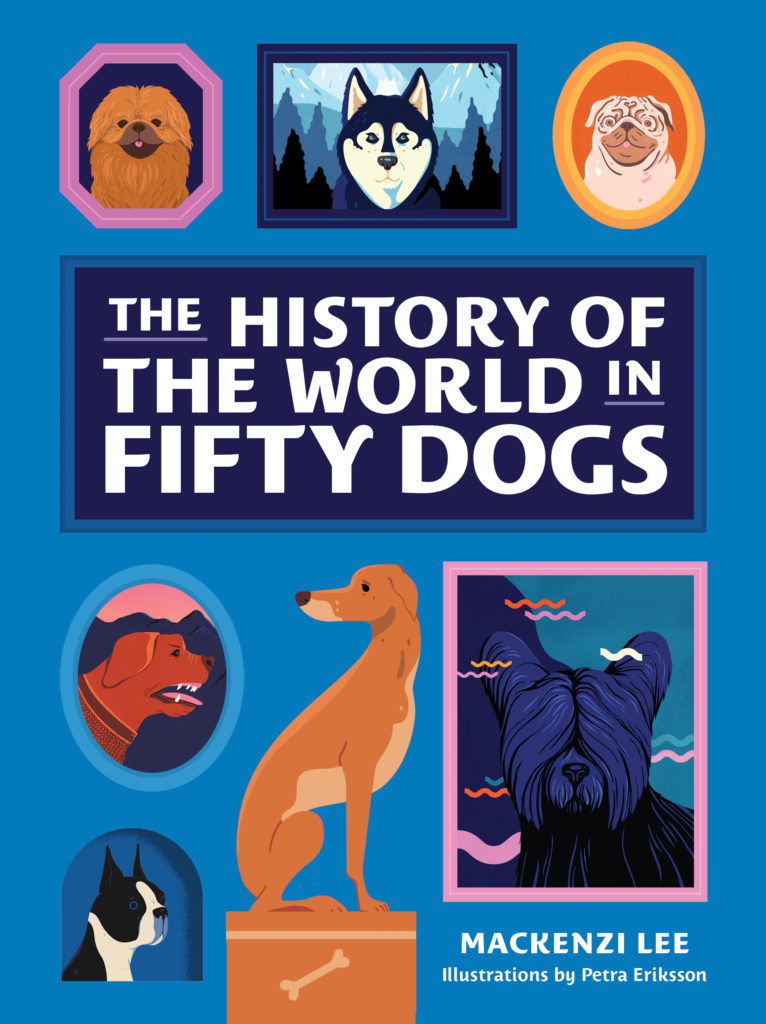
I have loved history since I was young, but always found the pieces that fascinate me the most are not the wars, the politics, the congresses, or the big events people put on plaques. I gravitate toward the quirky, often lesser known stories that not only prove history was deeply weird, but also the universalities of the human—and, in the case of The History of the World in 50 Dogs—canine experience. The stories of history’s dogs documented in the book provide small windows into the larger historical moments in which they happened, as well as the lives of the humans they kept company. The book contains stories of dogs—real, mythical, and some that are likely a bit of both—and humans. Throughout history and across the world, dogs have been pets, companions, hunters, workers, protection, pests, experiments, sacred, memorialized, feared, hated, loved, and everything in between.
Knowing the impact my own dog has had in my life, it seemed impossible that more than a few of history’s greatest heroes and villains hadn’t been influenced by dogs of their own. So I set out to document them, compiling a small history of the world through the eyes of dogs.
I hope you enjoy this abbreviated version! The History of the World in 50 Dogs is available wherever books are sold.
Tinker Tailor Soldier Pug
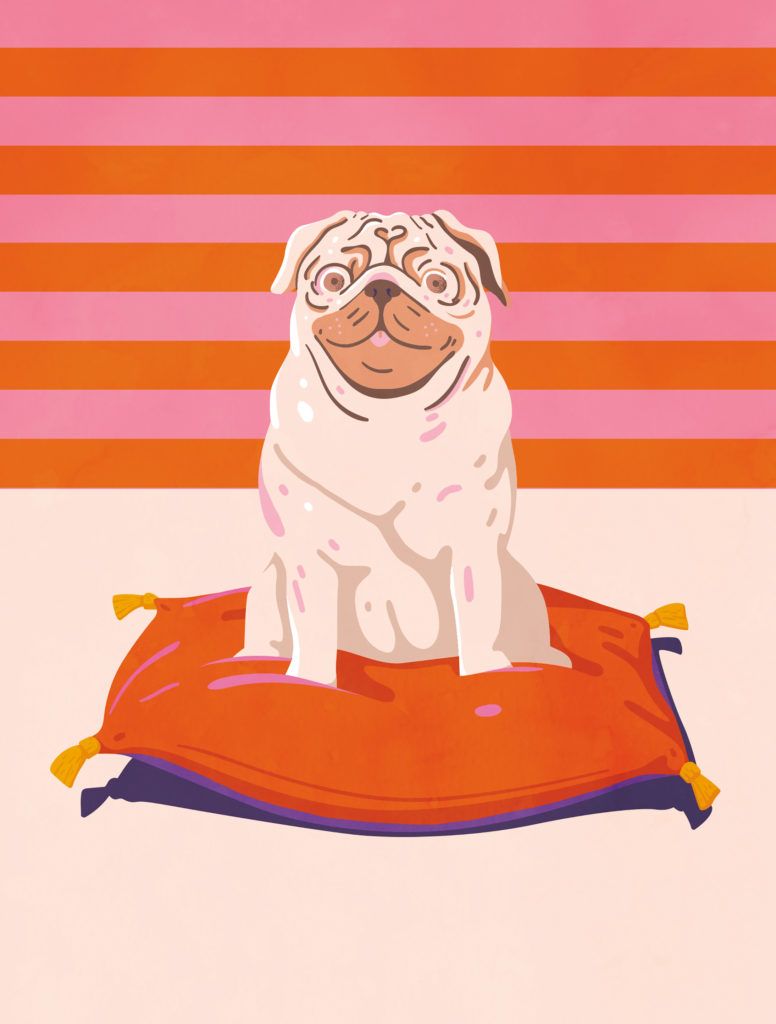
In the 1500s, the Netherlands were under the control of the Habsburg family, specifically Philip II, the Habsburg king of Spain. And they were getting fed up with being under Spanish rule. The Spanish Inquisition had come north, and both Protestants and Catholics who weren’t considered Catholic enough were being executed for heresy. Many members of the nobility were against this policy of Christianity by murder. Among this group was William of Orange, known also as William the Silent. When his religious dissidence and rejection of Spanish rule made him a target of the Inquisition, William managed to escape to the Holy Roman Empire, where he mustered an army to lead against the Spanish for control of the Seventeen Provinces. And thus began the Dutch Revolt and the Eighty Years’ War.
Like most European nobles at the time, William had many dogs—some for hunting and other, smaller ones as indoor companions. He often took his dogs to the battle camps with him and kept them in his tent for company. They were not war dogs like the molossuses of the conquistadors; they were meant to provide comfort after battle. One of his favorite canine companions was a pug called Pompey. One night, while camped at Hermigny, during the Siege of Mons, a Spanish assassin snuck into the Dutch camp and attempted to snuff William in his sleep. While William snored in blissful ignorance, Pompey heard the unknown person approaching their tent and began barking furiously and jumping on his master’s face. Whether he was barking because DANGER or barking because POSSIBLE NEW FRIEND, we’ll never know, but his commotion woke William, and he was able to escape assassination.
The Gravity of the Situation
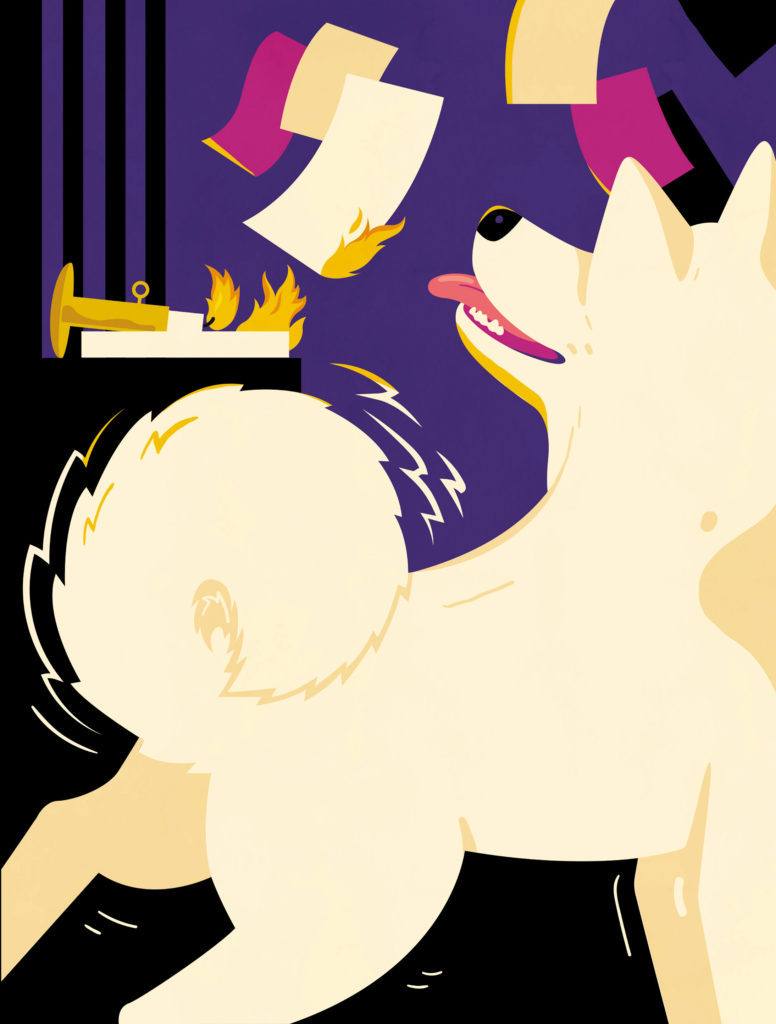
We all know that the story of the apple falling onto Newton’s head and him shouting “Eureka!” and inventing gravity is a myth. But there’s a much more interesting backstory to the discovery of one of the universe’s basic principles by Sir Isaac, and of course it involves his dog. Isaac Newton was a key figure in the Scientific Revolution, a period in European history that is considered the emergence of modern scientific fields such as mathematics, physics, astronomy, biology, human anatomy, and chemistry. In 1632, with the publication of Galileo’s Dialogue Concerning the Two Chief World Systems, the revolution shifted to new schools of thought. One of the crowning pieces was the publication of Isaac Newton’s Philosophiæ Naturalis Principia Mathematica in 1687, which included, among other things, our modern understanding of the laws of gravity and the three laws of motion that form the basis of modern physics and mechanics. But the concepts in Principia were very nearly lost to history. Because of a dog.
One night, Newton was making final revisions to his treaties by candlelight with his dog Diamond at his feet. Someone knocked on the door, and Newton got up to answer it, and Diamond, as is the great tradition of the dog, went berserk because someone was at the door. Newton left Diamond in the study, where she proceeded to run circles. On one of these laps around the room, Diamond collided with the leg of Newton’s writing table, which tipped the candle over. Directly onto the manuscript. So Newton returned to the study to find twenty years of research literally up in flames. The manuscript that Newton was working on was completely destroyed. But rather than hanging a sign around Diamond’s neck that said “i destroyed my person’s monumental scientific research that will shape the twentieth century because i am a smol dog and am thus made of chaotic energy” and posting it to ye olde dog-shaming Instagram, he is said to have picked up his dog and said, “Oh, Diamond, Diamond, little do you know the mischief you have done me!”
Semper Fido

What’s the long German word for when something gets so popular it then becomes unpopular but still remains relevant in the cultural lexicon? Because that’s what happened to Fido. In spite of the name being almost synonymous with “dog,” Fido doesn’t even crack the Internet’s top one hundred most popular dog names these days. And yet, if you say “Fido” to anyone, they know exactly what kind of animal you’re talking about. So where did it all start? Who was the OG Fido? The name itself is a variation on the Latin word fidelis, which means “to trust or put faith in.” Calling your dog Fido is the equivalent of calling him Trusty or Faithful, which makes sense because loyalty is one of the characteristics we most prize in our dogs. So whose Fido was the Fido that paved the way for all other Fidos? Good old Abraham Lincoln.
Before he was president, Lincoln was a lawyer in Springfield, Illinois. Fido was a favorite dog of both the Lincolns and Springfield. But when Lincoln’s victory was announced with fireworks and cannons, Fido was terrified and hid under the family couch. The throngs of people stopping by the Lincoln home to visit and congratulate the president elect similarly stressed Fido the fork out. Fido may have been the pet of a president, but he wasn’t a presidential pet. So Lincoln made the very tough decision to leave Fido in Springfield in the care of a local carpenter, John Roll. Though all the Lincolns’ furniture was sold or auctioned off before their move, Abe made sure that a special couch stayed with the Rolls, because it was Fido’s favorite to sleep on. He even had Fido’s formal portrait taken to travel with him and his family to the White House. The public, already obsessed with their new president-elect, became similarly obsessed with Fido. His photo was printed in newspapers around the country, which is when the name Fido skyrocketed in popularity.
“Hello? Yes, This is Dog”
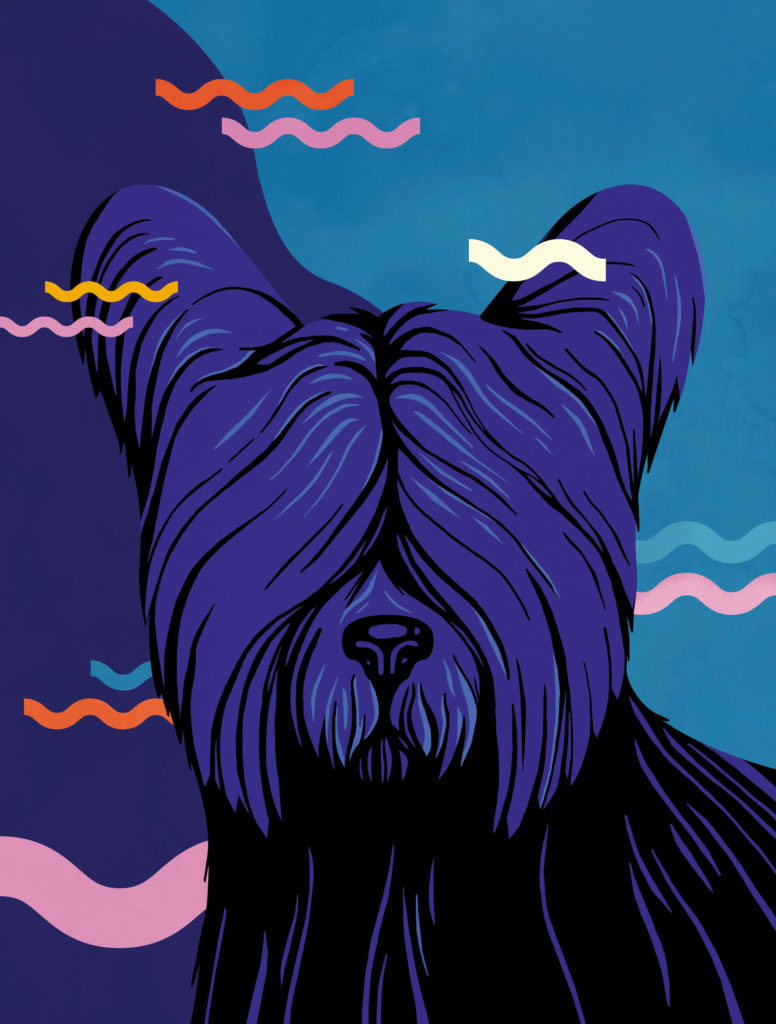
Before Alexander Graham Bell invented the telephone, the iron lung, hydrofoil, modern metal detectors, and a host of other things, he tried to teach his dog to talk. In fact, without that talking dog, we may not have the telephone at all. Alexander was born in Edinburgh, Scotland, in 1847. When he was around 12, his mother began to go deaf. Alexander found the best way to communicate with her was by speaking close her forehead so she could feel the vibrations of his voice. His father, a renowned elocutionist, also devised a system of transcribing words and vocalizations into symbols representing the shape and movement the lips and tongue formed to make them. These two things led young Alex to explore how the “visible speech” method could help deaf people communicate vocally despite having never heard how the words they were saying sounded, simply by showing them how to move their mouths. He began his experiments on his Skye terrier, Trouve.
The first task was to teach Trouve to growl on command, then to do it while standing on his hind legs so that Alexander could more easily reach and manipulate his mouth. Using the training from his father’s method, Alexander would shape Trouve’s mouth to produce the sound ma, ma, ma from his growl. In time, and with a lot of treats, Alexander’s dog was able to pronounce “Mama” in a human-like way all on his own with the combination of growling and lip moving. Alexander added new syllables to Trouve’s vocabulary—ga, ah, ow, and oo. By arranging these sounds, Alexander successfully taught his dog to say “How are you, Grandmama?” Having proved his theory on his dog, he went on to introduce this method to several students he worked with at a school for the deaf.
A Small History of Therapy Dogs
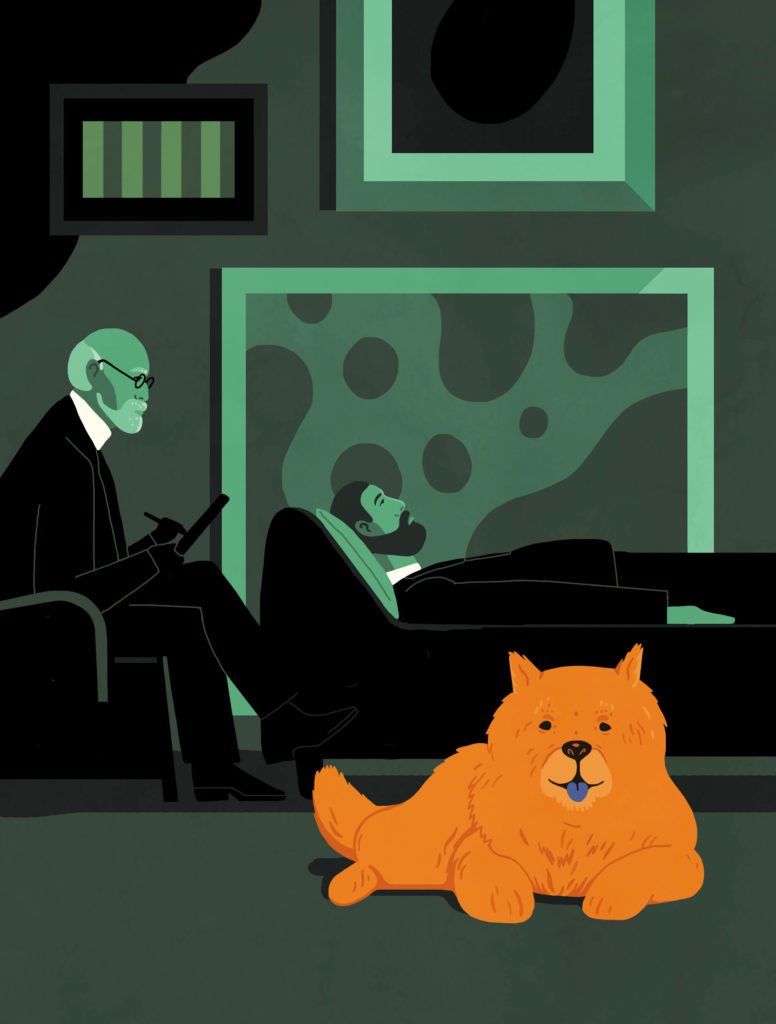
Animal-assisted therapy traces its roots all the way back to ancient Greece, where horses were used to lift the spirits of the severely ill. The most famous therapy dog belonged, fittingly, to history’s most famous therapist: Sigmund Freud. Freud was late to get on the dog bandwagon: He was seventy when his daughter Anna brought home a German shepherd named Wolf, and Freud fell in love—so much so that his daughter stopped giving him birthday presents and instead just gave him pictures of Wolf. When Freud got his own dog, a chow chow named Jofi, the father of psychoanalysis gained not only a companion, but an office assistant. The first patient Jofi provided comfort for was Freud himself.
By this point in his life, Freud had cancer of the jaw, which resulted in painful surgeries, prosthesis, and difficulty chewing and speaking. While going through a series of operations and hospital stays, Freud wrote to a friend, “I wish you could have seen with me what sympathy Jofi shows me during these hellish days, as if she understood everything.” It wasn’t long before Jofi started joining Freud for sessions with patients, and he quickly noticed a change. Freud not only observed the calming affect Jofi could have on his patients, but also how in tune she was to human emotions, and started taking cues about the mental state of his patients from Jofi. She would lie near a patient if they were depressed and needed comfort, whereas she would keep her distance if the patient was anxious. Freud also noticed that children in particular seemed better able to disclose painful information with a dog nearby, though many adults were similarly affected. Jofi’s presence lowered the barriers humans put up to avoid talking about painful subjects.
Even without the certification required to be an official therapy dog, studies show that any interaction with a dog can lower blood pressure. Petting a dog releases the stress-reducing hormone oxytocin and decreases the production of the stress-causing hormone cortisol. Dog contact has also been linked to reduced cholesterol and decreased triglyceride levels, which contribute to better cardiovascular health. So go pet a dog—it’s good for you.
Martha, My Dear

So, who’s your favorite Beatle? Is it John, the intellectual? Or maybe Paul, the romantic? George, the shy, mysterious one? Or is it Ringo, the goofball? Personally, my favorite Beatle has got to be the loveable one. The mopsy-haired one with the affable personality who loved everyone. Perhaps not present in all the band’s most memorable moments, but always loping along behind with her tongue hanging out and slobber dribbling from her jowls. The leader, if you will, of Sergeant Pupper’s Lonely Hearts Club Band. Fine, my favorite Beatle is a dog. Specifically, Paul McCartney’s sheepdog, Martha. Martha made the Fab Four five in 1966, at the height of Beatlemania. Paul had just moved into a new house in London with his girlfriend, Jane Asher, and decided he needed some canine companionship to complete their family. Soon, a floppy-eared sheepdog puppy joined them. Paul wanted to call her Knickers, but the breeder was so horrified when she found out that Paul agreed to change the dog’s name to something much more traditional and far less cheeky—Martha.
While Martha was never onstage or on-screen with the Beatles, she was a fixture backstage, and one of the gang—fortunately, as a sheepdog, she sported the mop-top haircut naturally. She brought out a different side of the Beatles, particularly Paul. He later said of her, “She was a dear pet of mine. I remember John being amazed to see me being so loving to an animal. He said, ‘I’ve never seen you like that before.’ I’ve since thought, you know, he wouldn’t have. It’s only when you’re cuddling around with a dog that you’re in that mode, and she was a very cuddly dog.” A few years after they adopted Martha, Paul and Jane Asher broke up. Not long after, the Beatles released the White Album, which included the song “Martha My Dear.” Most people thought it was Paul mourning the break up with the great love of his life, but he later revealed the true meaning of the song: It was literally just about how great his dog was. Martha lived to the ripe old age of fifteen and is still revered by many Beatles fans in the same way the Fab Four themselves are. One of Martha’s offspring, Arrow, appeared on the cover of a Paul McCartney live album in 1993.
Her Majesty’s Corgi’s
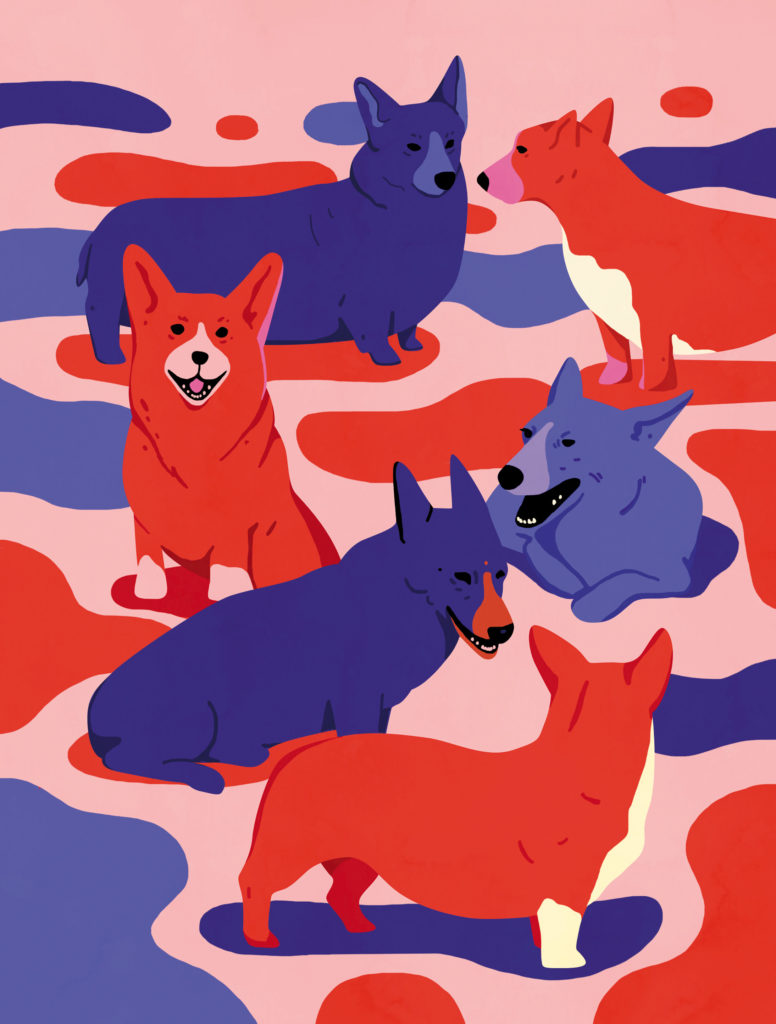
When Thelma Evans was nine years old, her dog was run over by a car. The driver felt so horrible about the accident that he wrote to Thelma’s parents, offering to give the family a new dog. Her parents declined, but when Thelma found out, she went rogue and wrote a letter of her own to the driver, saying she’d be happy to accept a new dog. But the driver didn’t feel he could give her one without the permission of her parents. The Twist? The driver of that car was the future King George VI, and Thelma became one of the founding breeders of the line of royal corgis. Funny little world, isn’t it? In 1933, Thelma (who did not tell the duke that she was the little girl whose dog he’d run over) brought the royal family their first corgi puppy, who they named Dookie. Dookie was so loved by the princesses that they soon acquired a second named Jane.
The appearance of the corgis with the royal family also introduced the breed to England as an option for a pet, rather than just a farm dog. Since the 1950s, the queen has personally overseen a program of corgi breeding based on the grounds of Windsor Castle with the help of women like Thelma Evans. Post–World War II, the breed standards began to change to make them more pets than farm dogs. Now that they were no longer herding cattle, Corgis were bred to have longer, rounder bodies that hang lower to the ground. Their faces also got more adorably cartoonish. The queen has personally owned thirty corgis. In August 1981, when the queen’s flight landed in Aberdeen for her annual Balmoral holiday, it was reported that thirteen corgis were with her. The queen has never allowed her corgis to compete in dog shows, or sold one, though she has given many as gifts. Around 2015, the queen stopped breeding corgis, stating that she didn’t want to leave any behind when she died. In 2018, the last royal corgi died, bringing another great British dynasty to an end.
Featured image: a close-up of the image for Tinker Tailor Soldier Pug. This illustration and all illustrations in this post and in The History of the World in 50 Dogs by Petra Eriksson.





